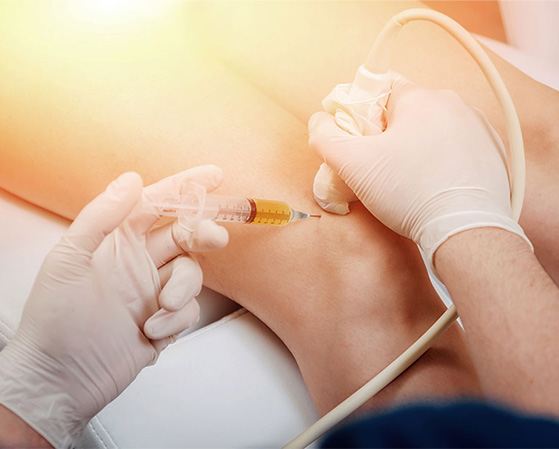Introduction
Knee osteoarthritis (OA) is a common musculoskeletal condition that affects millions of people worldwide, causing pain, stiffness, and reduced mobility. While traditional treatments such as medications, physical therapy, and joint injections offer relief to some extent, regenerative medicine has emerged as a promising alternative. This comprehensive guide aims to shed light on the application of regenerative medicine for knee osteoarthritis, exploring its mechanism of action and why it should be considered a first-line treatment for managing musculoskeletal conditions.
The Rise of Regenerative Medicine
Regenerative medicine is a revolutionary branch of medical science that harnesses the body’s innate healing abilities to repair and regenerate damaged tissues. The approach involves the use of stem cells, growth factors, and tissue engineering to treat a wide range of conditions, including knee osteoarthritis. The primary goal of regenerative therapies is to restore joint function, reduce pain, and improve the overall quality of life for patients suffering from knee osteoarthritis.
References from Published Articles and Medical Journals
Numerous studies have been conducted to evaluate the efficacy of regenerative medicine for knee osteoarthritis. According to a randomized controlled trial published in the American Journal of Sports Medicine (Sampson et al., 2013), patients who received platelet-rich plasma (PRP) injections reported significant improvements in pain, function, and overall joint health compared to the control group.Similarly, a meta-analysis published in the Journal of Orthopaedic Research (Chahal et al., 2013) demonstrated the favorable outcomes of mesenchymal stem cell (MSC) therapy in promoting cartilage repair and reducing inflammation in patients with knee osteoarthritis.
Mechanism of Action :
PRP Therapy : PRP is derived from the patient’s blood and contains a concentrated amount of platelets, growth factors, and cytokines. When injected into the affected knee joint, these factors work synergistically to stimulate tissue repair, reduce inflammation, and promote cell proliferation. The growth factors present in
PRP act as signaling molecules that attract other cells to the injured site, accelerating the healing process (Giusti et al., 2016).
Stem Cell Therapy : MSCs, commonly sourced from bone marrow or adipose tissue, possess the unique ability to differentiate into various cell types, including chondrocytes, which are responsible for cartilage formation. When injected into the knee joint, MSCs home in on the damaged areas and stimulate the production of new cartilage and other connective tissues (Mobasheri et al., 2014). Additionally, MSCs secrete anti-inflammatory cytokines that dampen the destructive inflammatory processes occurring in knee osteoarthritis (Zhang et al., 2015).
Prolotherapy : It is a Proliferant Regenerative Injection treatment wherein the injected solution, typically a combination of dextrose (sugar water) and a local anesthetic, triggers a localized inflammatory response. This inflammatory process initiates the production of collagen(Hung et al.,2016) which helps strengthen and repair damaged tissues.
Autologous Conditioned Serum (ACS) : ACS, known as Regenokine in the United States and Orthokine in Europe, utilizes a patient’s own blood to increase anti-inflammatory proteins and growth factors. By blocking interleukin-1 (IL-1), a key player in inflammation, ACS provides pain relief and could potentially slow OA damage. While studies show only symptom relief and no tissue regrowth, ACS is considered safe and well-tolerated. It is commonly used for muscle, tendon, and ligament damage and may not be readily available for arthritis. The cost of ACS sessions can be relatively high.
Why Regenerative Medicine Should Be a First-Line Treatment
Unlike traditional treatments that primarily focus on managing symptoms, regenerative medicine addresses the root cause of knee osteoarthritis by promoting tissue repair and regeneration. Furthermore, regenerative therapies are minimally invasive, non-surgical, and associated with fewer adverse effects compared to surgical interventions.Research published in the Journal of Arthroscopy and Related Surgery (Jang et al., 2016) highlights that regenerative medicine provides a promising alternative to surgical interventions, with comparable outcomes in pain relief and joint function. Embracing regenerative medicine as a first-line treatment can potentially delay or eliminate the need for invasive surgeries, reducing healthcare costs and improving patient satisfaction.
AT ALLEVIATE
one of our main areas of expertise is “Precise Image guided Injection Based Regenerative Treatments” for Osteoarthritis of the Knee coupled with a multidisciplinary approach.Regenerative medicine offers a revolutionary approach to managing knee osteoarthritis, focusing on tissue repair, pain relief, and improved joint function. With an increasing body of evidence supporting its efficacy, regenerative therapies have the potential to become a first-line treatment for musculoskeletal conditions, including
knee osteoarthritis. As ongoing research continues to explore the vast potential of regenerative medicine, it is vital for healthcare professionals and patients to stay informed about these cutting-edge treatments and consider them as viable options for comprehensive knee osteoarthritis management.
References
- Sampson, S., Reed, M., Silvers, H., Meng, M., & Mandelbaum, B. (2013). Injection of platelet-rich plasma in patients with primary and secondary knee osteoarthritis: a pilot study. The American Journal of Sports Medicine, 41(12), 2909-2916.
- Chahal, J., Gómez-Aristizábal, A., Shestopaloff, K., Bhatt, S., Chaboureau, A., Fazio, A., … & Solanki, M. (2013). Bone marrow mesenchymal stromal cell treatment in patients with osteoarthritis results in overall improvement in pain and symptoms and reduces synovial inflammation. Stem Cells Translational Medicine, 2(5), 368-375.
- Giusti, I., Rughetti, A., D’Ascenzo, S., Millimaggi, D., Pavan, A., Dell’Orso, L., … & Dolo, V. (2016). Platelet concentration in platelet-rich plasma affects tenocyte behavior in vitro. Biomedicine & Pharmacotherapy, 83, 286-293.
- Mobasheri, A., Kalamegam, G., Musumeci, G., Batt, M. E., & Rahman, C
- Hung CY, Hsiao MY, Chang KV, Han DS, Wang TG. Comparative effectiveness of dextrose prolotherapy versus control injections and exercise in the management of osteoarthritis pain: a systematic review and meta-analysis. J Pain Res. 2016;9:847–57. [PMC free article] [PubMed] [Google Scholar]
- Autologous Conditioned Serum November 2016Physical Medicine and Rehabilitation Clinics of North America 27(4):893-908Christopher H. EvansXavier Chevalier



